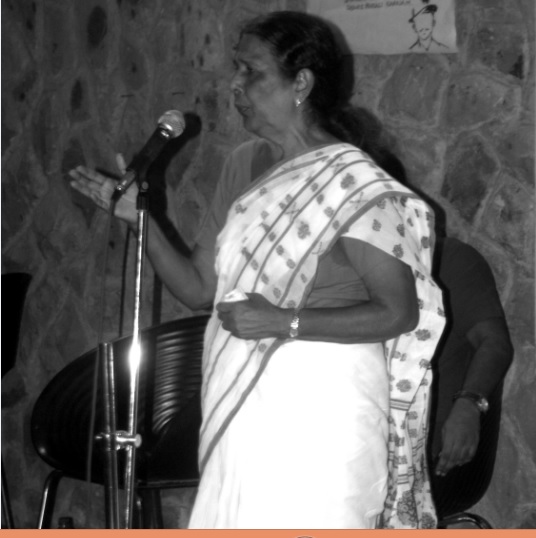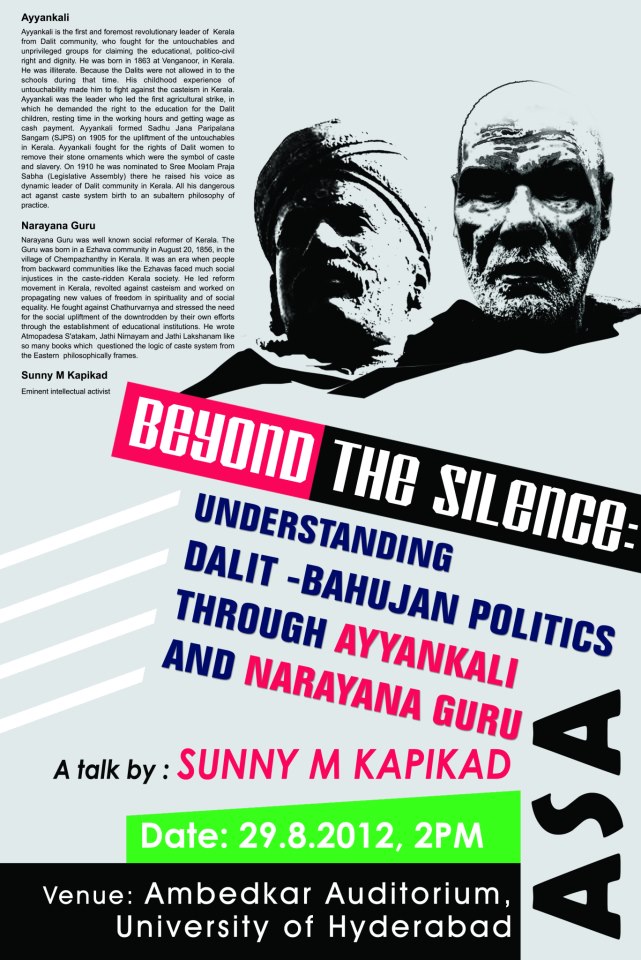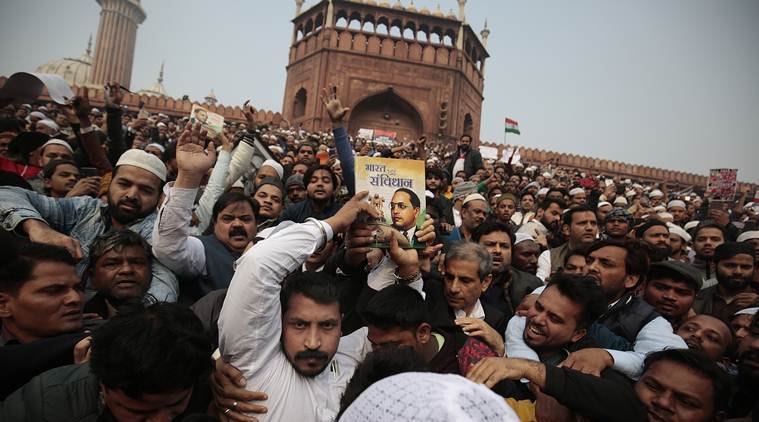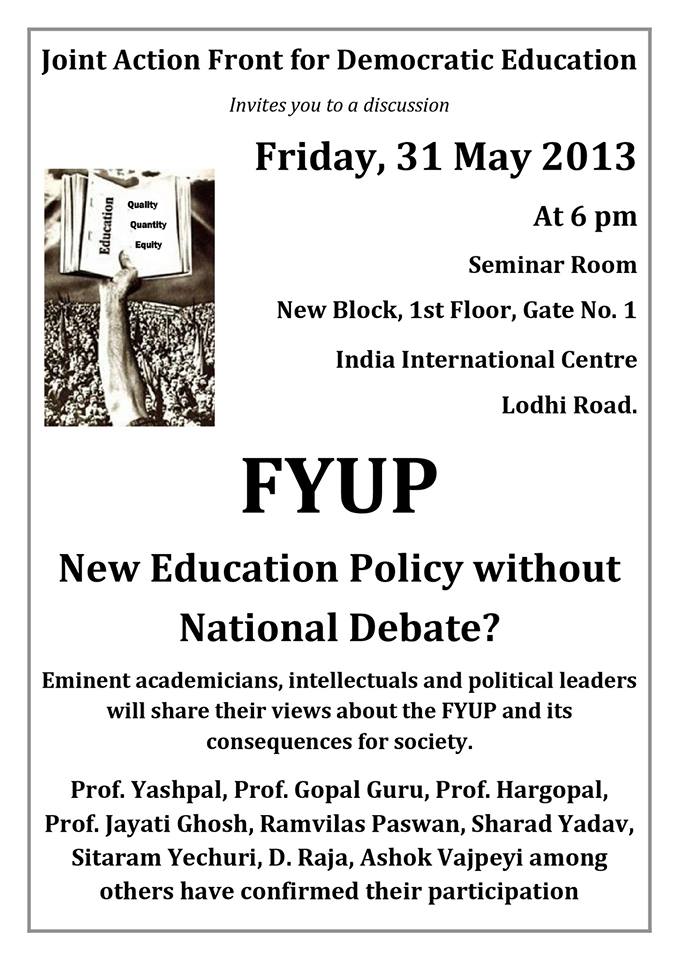Daisy Katta
When the Dalits in Maharashtra were still reeling from the Ramabai Nagar Massacre of 1997, in 2006, Maharashtra was jolted with news of another massacre, this time it was in Bhandara district. In Khairlanji village of Bhandara district four members of the Bhotmange family were lynched by a caste Hindu mob. 29th September 2014 marks exactly eight years since the brutal Kharilanji Massacre. In remembrance of Khairlanji, Tata Institutue of Social Sciences in Mumbai held a meeting to commemorate this incident. Present on the occasion were leading activist and Dalit writer Urmila Pawar, along with activist and publisher of Vidrohi magazine Sudhir Dhawale, and Dr. Suryakant Waghmore, author of Civility Against Caste.

Urmila Pawar
Writer and activist Urmila Pawar recalled, how even after a month of the Khairlanji Massacre, there was no news in the mainstream media or any reaction from the Maharashtra government over the incident. It was on 14th October 2006 during the annual gathering at Deekshabhoomi in Nagpur, that the news of atrocities in the neighbouring Bhandara surfaced. Urmila Pawar along with other women activists and writers had stormed the mantralaya during the cabinet meeting asking the then Chief Minister Vilasrao Deshmukh for justification of the brutal lynching of the Bhotmange family in Khairlanji.
There was much misreporting in mainstream media over Khairlanji treating it as a regular crime over “adultery” and not a caste atrocity. Stories which appeared in Ambedkarite dailies Vruttaratna, Samrat, Shashan Samrat, Loknayak and Mahanayak revealed the real angle of caste atrocity in the Khairlanji incident. It was only then that, slowly, the news of the massacre started trickling into the mainstream media, after the consistent riots and protests in Nagpur, but the atrocity angle was still amiss. Urmila Pawar further added: “People have been trying hard to transgress caste boundaries. Will you kill anyone who transgresses caste? Violence is another name of caste; people who raise their voice against this injustice are suddenly termed Maoist insurgents”.
Urmila Pawar also talked of the dangerous trend of how in such cases the Dalit women have been continuously targeted. In the case of Kahirlanji, it was consistently misreported in the mainstream media that the killing was due to an “illicit relationship” between Surekha Bhotmange and her cousin Siddharth Gajbhiye. This was also seen in the case of Sanjay Khobargade, who was set ablaze by the caste Hindu village mob over a land dispute in the Gondia district of Mahrashtra, where his wife Devakabai was implicated in killing her own husband over an illicit relationship with her neighbour.
These seventeen years since the Ramabai Nagar Massacre in 1997 has seen a steep rise in Dalit atrocities in India. In 2002 in Jhajjar, Haryana, five Dalits were lynched by caste hindu mob. In 2003, in Bhutegaon in the Marathwada region of Maharashtra a youth was burnt alive by a crowd of caste Hindus; and in Sonnakhota in Beed district of Maharashtra a Dalit man was stoned to death. The most recent cases include the immolation of Sanjay Khobragade of Gondia and the lynching of young Nitin Aage of Ahmednagar district of by a caste Hindu mob for having a relationship with an “Upper Caste” girl.
According to an NCRB report, during the year 2011, a total of 11,342 cases were reported under the Scheduled Castes and Scheduled Tribes (Prevention of Atrocities), 1989. Bihar has reported 3,024 cases accounting for 26.7% of the total cases reported in the country followed by Uttar Pradesh (17.6%) and Andhra Pradesh (12.7%).
In Khairlanji, all the complaints qualified to be registered under SC/ST (Prevention of Atrocities) Act (PoA Act), but none was. Even after the case of beating of Siddharth Gajbhiye, the case was not seen fit to be registered under the PoA act. On 14 July, the Nagpur bench of the High Court commuted the death penalty awarded to the six convicted and sentenced to 25-year rigorous imprisonment. The two others who received life sentences received a similar penalty. The court ruled that the murders resulted from an act of revenge and was not caste related. Bhaiyalal Bhotmange, the sole surviver of this carnage, is still waiting for justice.
~~~
Daisy Katta is a mass media graduate from Mumbai and is currently working at Tata Institute of Social Sciences as Research Investigator.










